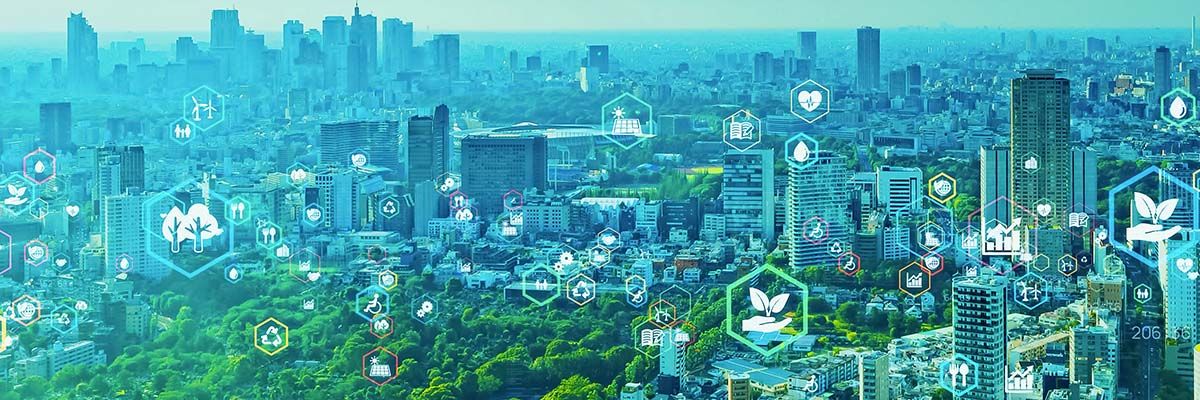
Building decarbonization: here and now
You’ll no doubt have noticed that building decarbonization is a hot topic right now. In the pursuit of sustainability, improving the energy performance of buildings has an important role to play. To find out how, and what steps you can take, read on…
The term building decarbonization refers to the steps that can be taken to reduce or eliminate the carbon emissions associated with the construction, operation, and maintenance of buildings. According to tracking body worldemissions.com, buildings emit 3.2 Gigatons (GT) of carbon a year. So, there’s clearly a lot of opportunity for improvement[1].
Reducing emissions involves implementing multiple strategies and technologies which seek to minimize the greenhouse gas (GHG) emissions that buildings produce, which come mainly from energy use for heating, cooling, lighting, and other systems.
Key aspects of decarbonizing buildings
Given the importance, let’s take a deeper dive into the subject, so you have a primer for better understanding of both the terminology and how the requirements of managing your facilities are likely to evolve as decarbonization is increasingly considered. We’ll take a high-level look at several decarbonization strategies to familiarize you with the broader landscape and then look more closely at one of them which is particularly relevant right now.
Broadly, the key strategies behind decarbonization are:
Increasing a building’s energy efficiency:
- Adding an Energy and Building Management System EMS/BMS to monitor and control costs.
- Improved insulation can be achieved by enhancing the thermal performance of building envelopes, which reduces heating and cooling demand.
- High-efficiency appliances and systems such as energy-efficient HVAC or lighting will reduce energy consumption.
- Advanced building designs that confer benefits like maximizing natural light and ventilation. This reduces the need for energy-consuming mechanical systems.
Innovative design and retrofitting:
- Modern building design is shifting towards integrating strategies like passive solar design, natural ventilation, and others which reduce energy demand.
- Simultaneously, older buildings can be upgraded with modern, energy-efficient technologies and materials.
New policy and regulation standards:
- Stricter building codes and standards that mandate energy efficiency and low-carbon practices are increasingly being adopted.
- At the same time, financial incentives, rebates, and subsidies to encourage building owners and developers to adopt decarbonization measures are becoming more and more prevalent.
Encouraging behavioral changes:
- Educating building occupants about energy-saving practices and encouraging behaviors that reduce energy use are now commonly an important part of the domain of the facilities manager.
- This includes promoting sustainable practices such as waste reduction, recycling, and responsible water use within buildings.
As you can see, the building decarbonization landscape is a broad one. And as you might also expect, the shift towards more sustainable and resilient building environments also involves the use of another familiar term: smart technology.
What’s the role of smart technologies in building decarbonization?
Smart technologies will play a crucial role in building decarbonization by helping to optimize energy efficiency, waste reduction, and easing the integration of renewable energy sources. So, what advantages do smart technologies bring to the field of building decarbonization?
Perhaps first, modern Energy Management Systems/Building Management Systems (EMS/BMS), such as NexRev’s Freedom, by default use real-time monitoring to oversee energy consumption on an ongoing basis. These systems accrue real-time data that can be harnessed to identify inefficiencies and areas for improvement. They can also automatically adjust lighting, heating, cooling, and other systems based on data related to occupancy and usage patterns. All of this clearly reduces energy wastage.
Like the EMS/BMS, modern HVAC Systems are also getting smarter. They incorporate technologies like NexRev DrivePak with variable frequency drives that adjust the speed of fans and pumps to match the demand (you can read more about these drives in our blog here). Additionally, HVACs can support zoning which allows precise control over different areas of a building, so that only occupied spaces are heated or cooled.
Integrated controls bring different subsystems (for example HVAC, lighting, security) under one roof for centralized control and increased possibilities for optimization. Energy Benchmarking compares energy usage against standards and goals, which means improvement can be continuous. You can read more on NexRev’s smart EMS/BMS in our blog here.
Like heating and ventilation, lighting is also more effectively controlled by smart technologies. One example is smart LED systems, which are more energy efficient. Another is the use of occupancy sensors which can automatically turn off lights in unoccupied rooms. A third example is “daylight harvesting” where the lighting system adjusts artificial lighting based on the amount of natural light available. All these steps serve to reduce energy use.
The path to decarbonization doesn’t end there. Many more steps are being taken including integration with renewable energy sources, energy storage management, interactions with smart grids, the deployment of IoT devices, and the increasing use of data analytics to guide decision making.
The sheer breadth of these emerging approaches underlines the importance of how buildings can significantly reduce their energy consumption and carbon emissions. If you want to read more on the subject, our blogs on Modern EMS/BMS, here, and smart HVAC systems, which you can find here, will add further detail to the picture.
About NexRev
At NexRev, we’ve been unlocking the power of facility and energy management data with over a million connected devices across North America. Our team of experts is focused on helping you deliver more with your budgets, infrastructure, and assets to create sustainable savings in operations and energy, reducing your risk and increasing operational confidence.
To begin a discussion on how we can help you to reduce energy waste please email us at